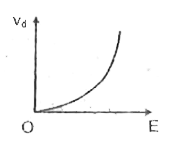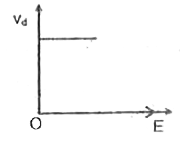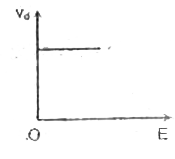State Ohm' law and deduce it from the knowledge of drift velocity of free electrons in a conductor carrying current.
Step by step video & image solution for State Ohm' law and deduce it from the knowledge of drift velocity of free electrons in a conductor carrying current. by Physics experts to help you in doubts & scoring excellent marks in Class 12 exams.
Updated on:21/07/2023Topper's Solved these Questions
- CURRENT ELECTRICITYBOOK - PRADEEPCHAPTER - CURRENT ELECTRICITYEXERCISE - Conceptual Problems
3 Videos
- CURRENT ELECTRICITYBOOK - PRADEEPCHAPTER - CURRENT ELECTRICITYEXERCISE - Very short Q/A
7 Videos
- COMMUNICATION SYSTEMSBOOK - PRADEEPCHAPTER - COMMUNICATION SYSTEMSEXERCISE - MODEL TEST PAPER-2
9 Videos
- DUAL NATURE OF RADIATION AND MATTERBOOK - PRADEEPCHAPTER - DUAL NATURE OF RADIATION AND MATTEREXERCISE - Exercise
191 Videos
Similar Questions
Knowledge Check
Mobility of free electrons in a conductor is
ARelaxation timeBElectric fieldCPotential differenceDAll of theseIf n,e,A and vd are free electron density inside conductor , charge of electron , area of cross-section of conductor and drift velocity of free electrons inside conductor, then current l through the conductor is
AneAvdBne2AvdCnevdDn2eA¯vdif E denotes electric field in a uniform conductor and vd the corresponding drift velocity of free electrons in the conductor, then which of the following graph is correct
A B
B C
C D
D
Derive an expression for drift velocity of electrons in a conductor. Hence deduce ohm's law.
View SolutionDerive an expression for drift velocity of electrons in a conductor. Hence deduce ohm's law.
View SolutionDeduce Ohm's law using the concept of drift velocity.
View SolutionIf the potential difference V applied across a conductor is increased to 2V with its temperature kept constant,the drift velocity of the free electrons in a conductor will-
View SolutionA current of 16 A is made to pass through a conductor in which the number of density of free electrons is 4×1028m−3 and its area of cross section is10−5m2. The average drift cross section is 10−5m2. The average drift velocity of free electrons in the conductor is
View Solution
